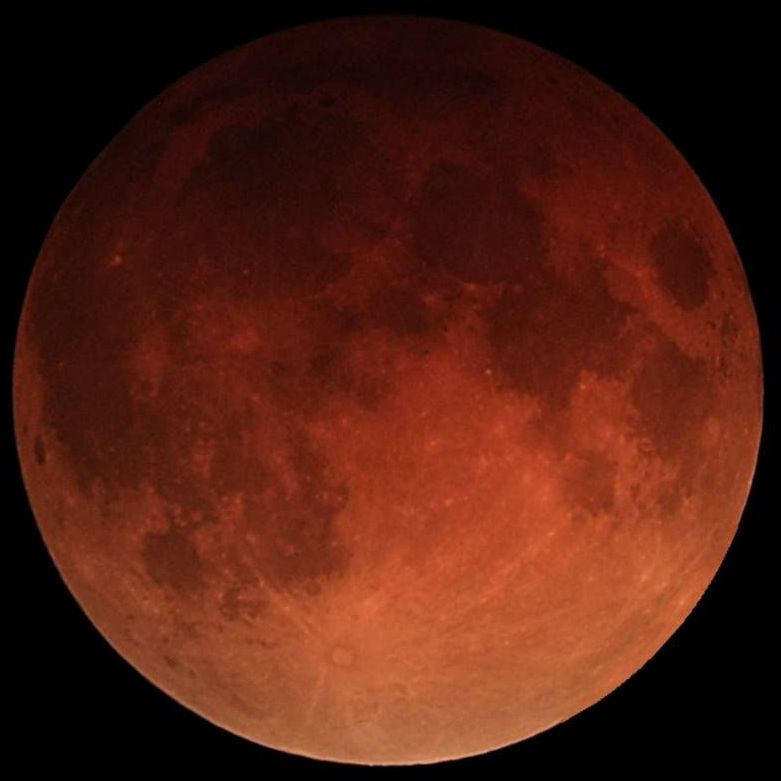Image: Lunar Eclipse January 31, 2018 California. Credit: Alfredo Garcia Jr
UK stargazers will enjoy a spectacular sky show this Summer, the total lunar eclipse! It will happen on July 27, 2018. We cannot wait!
Lunar Eclipse
Lunar eclipses occur when the Sun, the Earth and the Moon are on the same line (i.e. during the Full Moon) and the Moon passes through the Earth’s shadow. Although the Moon circles around the Earth every 27.2 days, the lunar eclipses do not happen every month. The orbit of the Moon is tilted. Therefore most of the time the Moon passes above or below the Earth’s shadow. If the Sun, the Earth and the Moon are not perfectly aligned, but close, only a part of the Moon will go through the Earth’s shadow. We will see a partial lunar eclipse. It might not sound as exciting as the total eclipse, but beautiful to watch nevertheless.
July 27 total lunar eclipse
The July 27 total lunar eclipse will be visible from Asia, Australia, Europe and South America. UK viewers will miss nearly half of the show because the Moon will not yet rise in our part of the world when the eclipse starts. If you want to enjoy the whole 6 hours 14 minutes of the event, including the breathtaking 103 minutes of totality, make sure to book yourself a ticket to Madagascar. Or how about Nepal? (or look at the map of the eclipse and choose your favourite place).
If you miss the July eclipse, don’t despair, the next total lunar eclipse will be coming in half a year, on January 21, 2019!
Why do we watch lunar eclipses?
Not only they are beautiful events to sit back and watch, lunar eclipses also help us discover more about space.
Greeks figured out that the Earth was round when they observed the rounded shadow of the Earth fall on the Moon during lunar eclipses. These days we try to use lunar eclipse observations to figure out what Earth-like exoplanets atmospheres are made of.
That takes the Moon watching to the whole new level, right?
Exoplanets
Exoplanets, i.e. planets orbiting stars other than the Sun, have been the focus of the astronomers attention for the last few decades. One way to detect an exoplanet is to spot how this planet transits (i.e. passes in front of its) star. It will look like periodical dips in the star’s brightness. This method is called transit photometry. Transit photometry can also tell us what the exoplanet’s atmosphere is made of. How? During the transit we see the light of a star through its planet’s atmosphere. By studying how the atmosphere absorbs the light, we can tell what elements it contains. This technique is called transitions spectroscopy. Unfortunately, the method works well only for big planets orbiting close to their stars (so-called “hot Jupiters”). But can we use the same technique to probe the Earth-sized exoplanets?
How solar eclipses can help us learn about Earth-like exoplanet atmosphere
With small Earth-like planets orbiting far away from their star it is not that easy. The contribution of the atmosphere to the signal we detect from its host star is very small. Too small to see with our modern telescopes!
But maybe there is a way to predict what it will look like?
To make our job easier, let’s agree that though it would be great to study all small exoplanets, at the moment we are especially interested in those that might be potentially habitable. Like our Earth. The atmospheres of such exoplanets should contain biomarkers: oxygen, methane, ozone, nitrous oxide.
If only we could fly a great distance away from the Earth, watch it transit the Sun and record its transition spectrum! We could then compare this spectrum with spectra of Earth-like exoplanets and look for similarities!
Turns out we can do it without even leaving the Earth! Just watch the lunar eclipse!
Lunar eclipses as exoplanet transits
If you ever observed the lunar eclipse, you know that the Moon does not get completely dark, even during totality. This is because when the Earth blocks the light from the Sun, some light still passes through the atmosphere.
Planet transits and lunar eclipses are similar in terms of what we observe. In case of the transfer we see the light from the star through its planet’s atmosphere. In case of the lunar eclipse we see the sunlight that passed through the Earth’s atmosphere reflected off the Moon. Therefore, both spectra contain the information about the composition of the planet’s air!
Bingo! We have our test transition spectrum!
Observing lunar eclipses is a first step. But we are hopeful that one day it will help us identify biosignatures in the faraway planets atmospheres!
Still curious?
- Watching the lunar eclipse is fun and easy. If you want to take some photographs of the event, here is how.
- For more information about the planets (including exoplanets),moons and eclipses visit our inflatable planetarium!
Any questions or comments? Let our space dome team know!

